Calvin Eng Is the Heart and Soul of Brooklyn Hotspot Bonnie’s
“There was one rule in the very beginning for my bar team, my managers, and all the sous-chefs: every dish had to be a banger.”

Calvin Eng, the man behind Brooklyn hotspot Bonnie’s, didn’t necessarily fantasize about being a chef. “I did go to culinary school. I did work as a chef, but my dream was to never become a chef,” he says. “My dream was always to have a restaurant.” Since he opened said restaurant that blends his Cantonese and American cultures in December 2021, it’s become nearly impossible to snag a table—the line begins at 5 p.m. for walk-ins. And the patrons come for more than food. It’s the '90s playlist pulsing in the background, the harmony between cocktails and cuisine, the retro green tiles.
To stroll into Bonnie’s is to acquaint yourself with Eng and his past. Black-and-white family photos line the walls. His personal cookbook collection adorns the wooden shelves. Even the name itself pays homage to his mother, who immigrated to New York from Hong Kong before Eng, 27, was born. (Bonnie is the American name her older sister gifted her when she moved.)
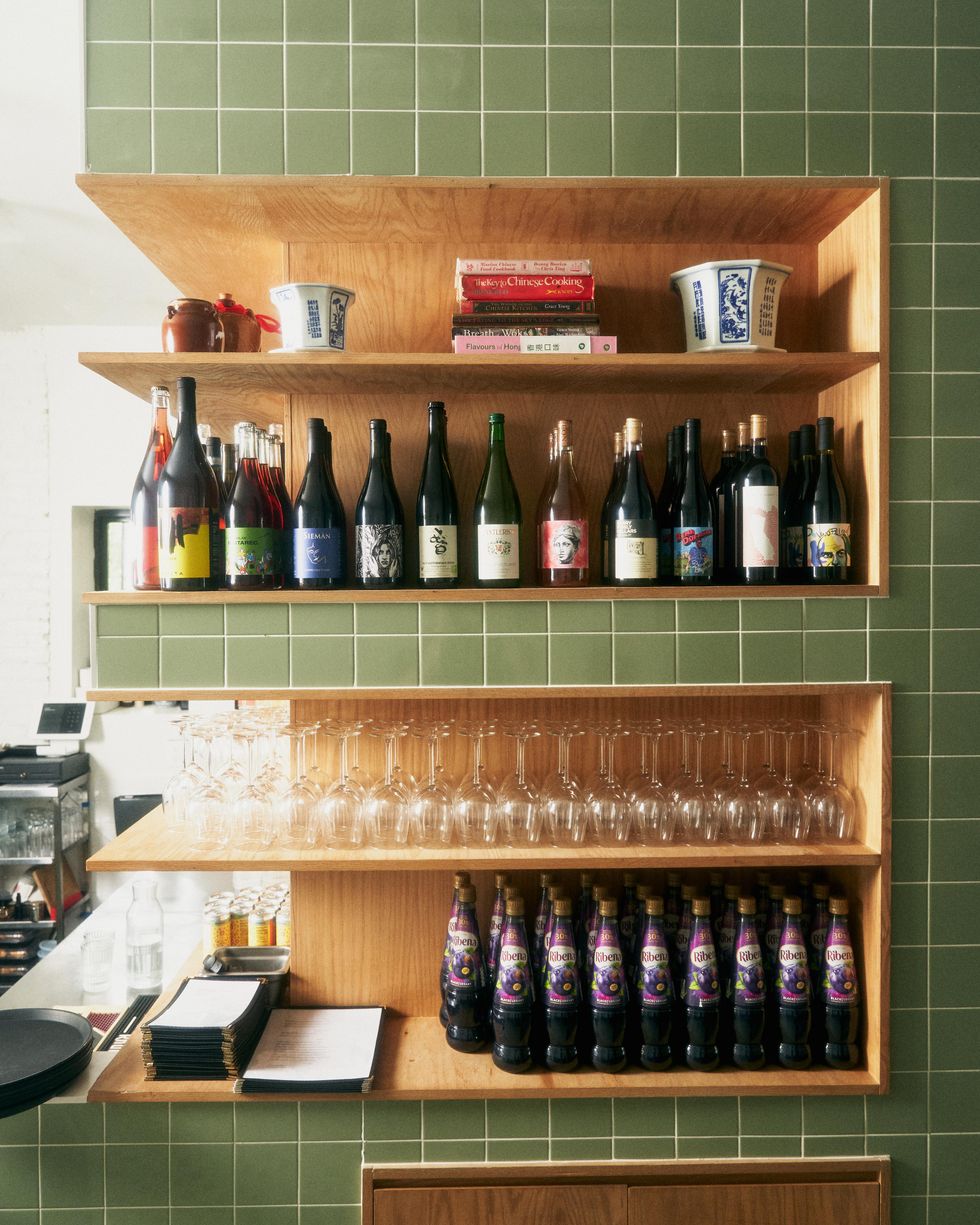
Eng decorated his shelves with an assortment of wines and the Ribena he drank as a child.
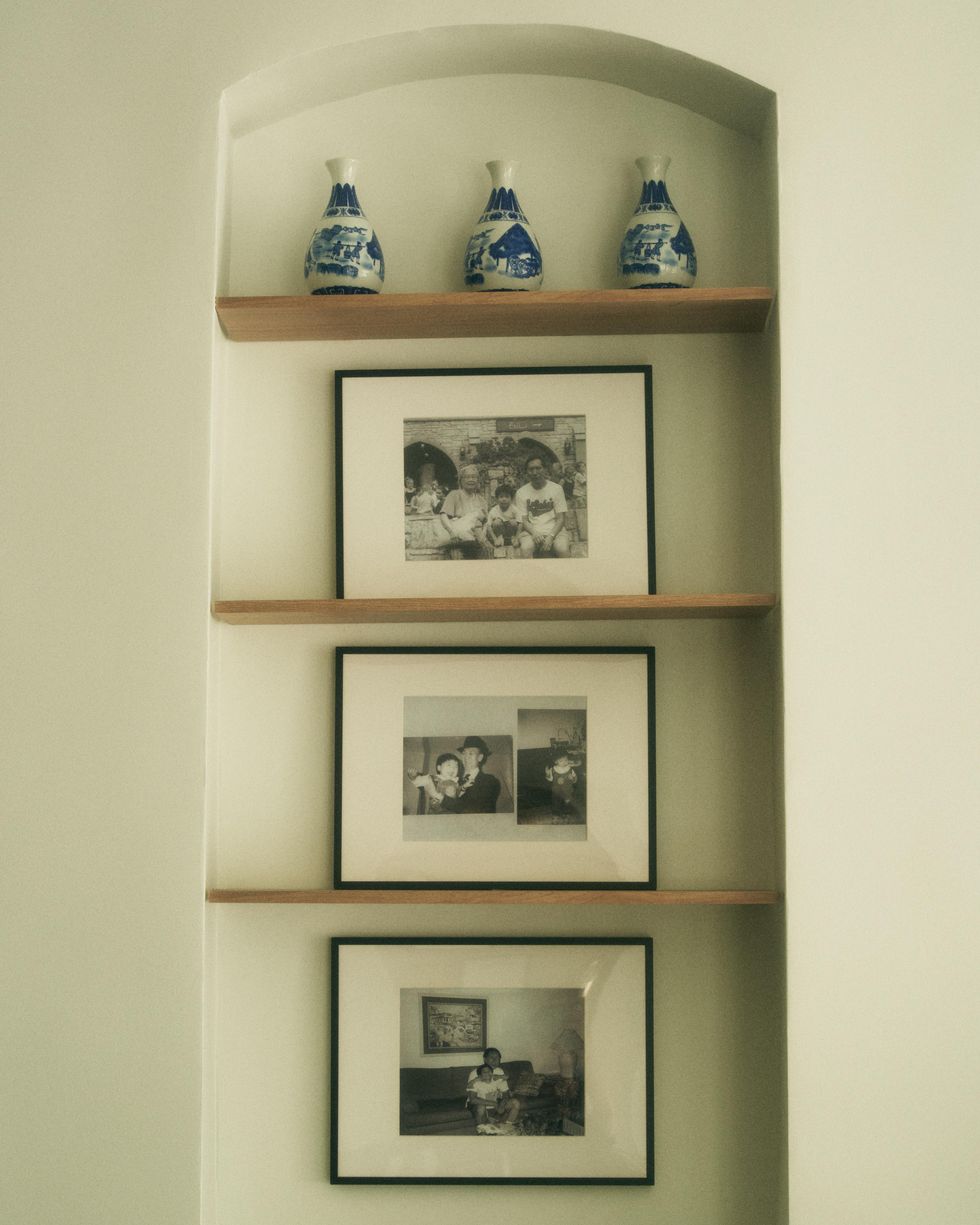
Family photos line the walls of Bonnie's.
When I visited Bonnie's, Eng was wearing an old New York Yankees T-shirt handed down by his father, Nike Daybreaks, and a pair of old kitchen pants so badly stained, he cut them down to shorts. Almost everything he wears is vintage by definition, but not in the precious sense of the word. Hand-me-downs might be a better descriptor. “I wear my sister's Busch Garden and Walt Disney World shirts from when she was a kid and my dad's Eddie Bauer sports shirts and my mom's windbreakers,” Eng says. He encapsulates these pieces as retro “promo merch.” You can, of course, now purchase your own Bonnie’s merch, but limited drops sell out quickly.
Throughout the interview, our voices contest with Nelly Furtado radiating from the speakers. “This is Rihanna radio right now,” Eng explains, though he often plays music from the ‘90s. “I feel like everyone here is around the same age, so we all like the stuff we grew up listening to.”

The Bonnie's Cha Siu McRib.
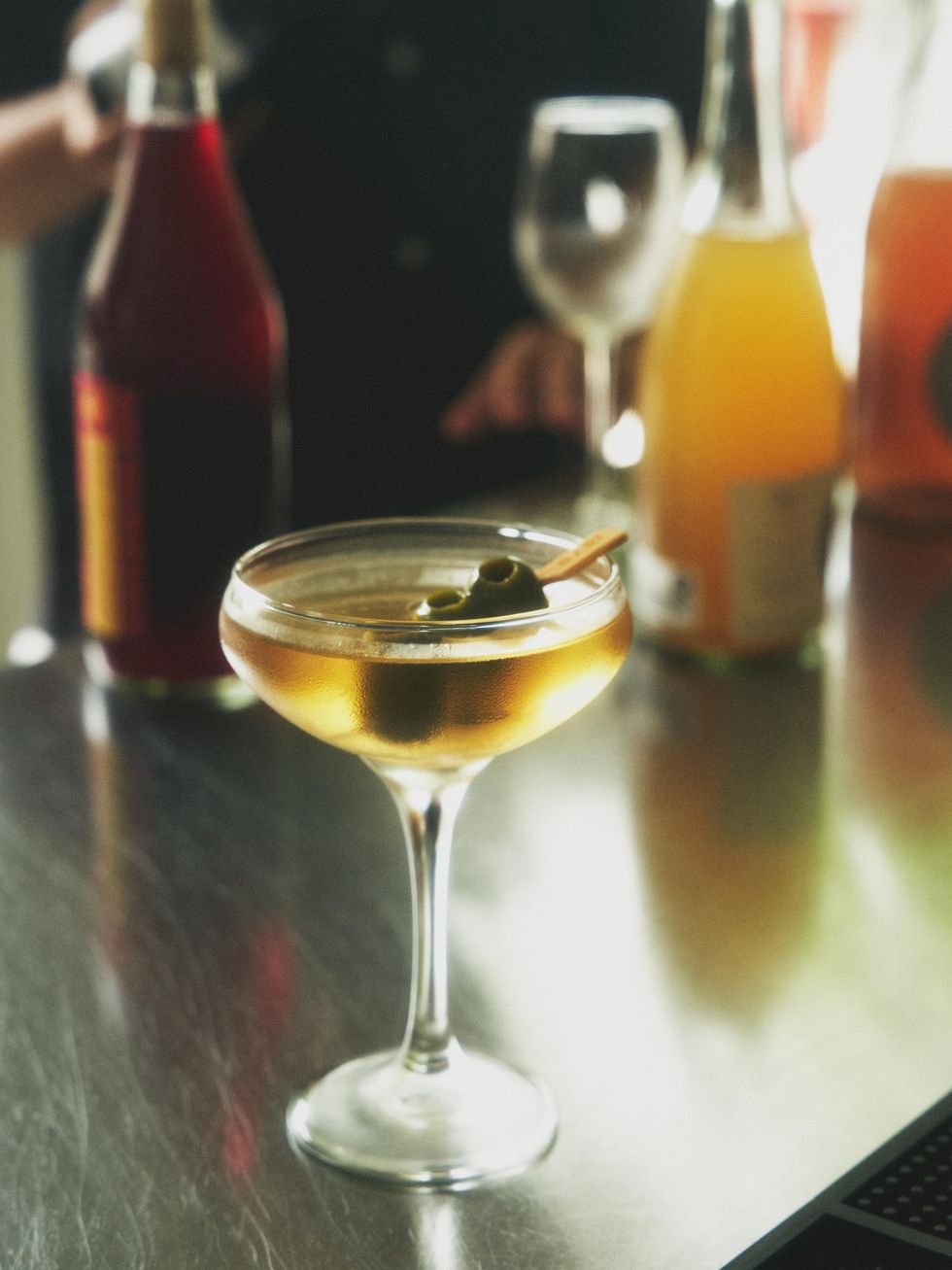
The Bonnie's MSG martini.
The menu has a similar ability to familiarize guests with the proprietor. Eng grew up in Bay Ridge, Brooklyn, eating his mother’s Cantonese food, working in a sandwich shop in Park Slope, and snacking on American takeout. The restaurateur mashed these Eastern and Western elements of cuisine into his Bonnie’s menu, which is best exhibited in his Cha Siu McRib—a Cantonese riff on a McDonald’s McRib sandwich. “There's nothing more Cantonese than Cha Siu” (a traditional method of barbecuing pork) “and there's nothing more American than McDonald's,” he says.
Another dish on the menu, the Fuyu Cacio e Pepe Mein, mixes pecorino with fermented black bean curd. Eng is quick to point out the similarities between Italian and Cantonese cuisine. The cocktail menu hosts drinks like an MSG martini (the letters "MSG" make up one of Eng’s many tattoos). Unlike the traditional Chinese menu, Bonnie’s boasts a tightly-edited selection. “There was one rule in the very beginning for my bar team, my managers, and all the sous-chefs: every dish had to be a banger.” And bangers they are—Eng was nominated by the James Beard Foundation in the "Emerging Chef" category this year.
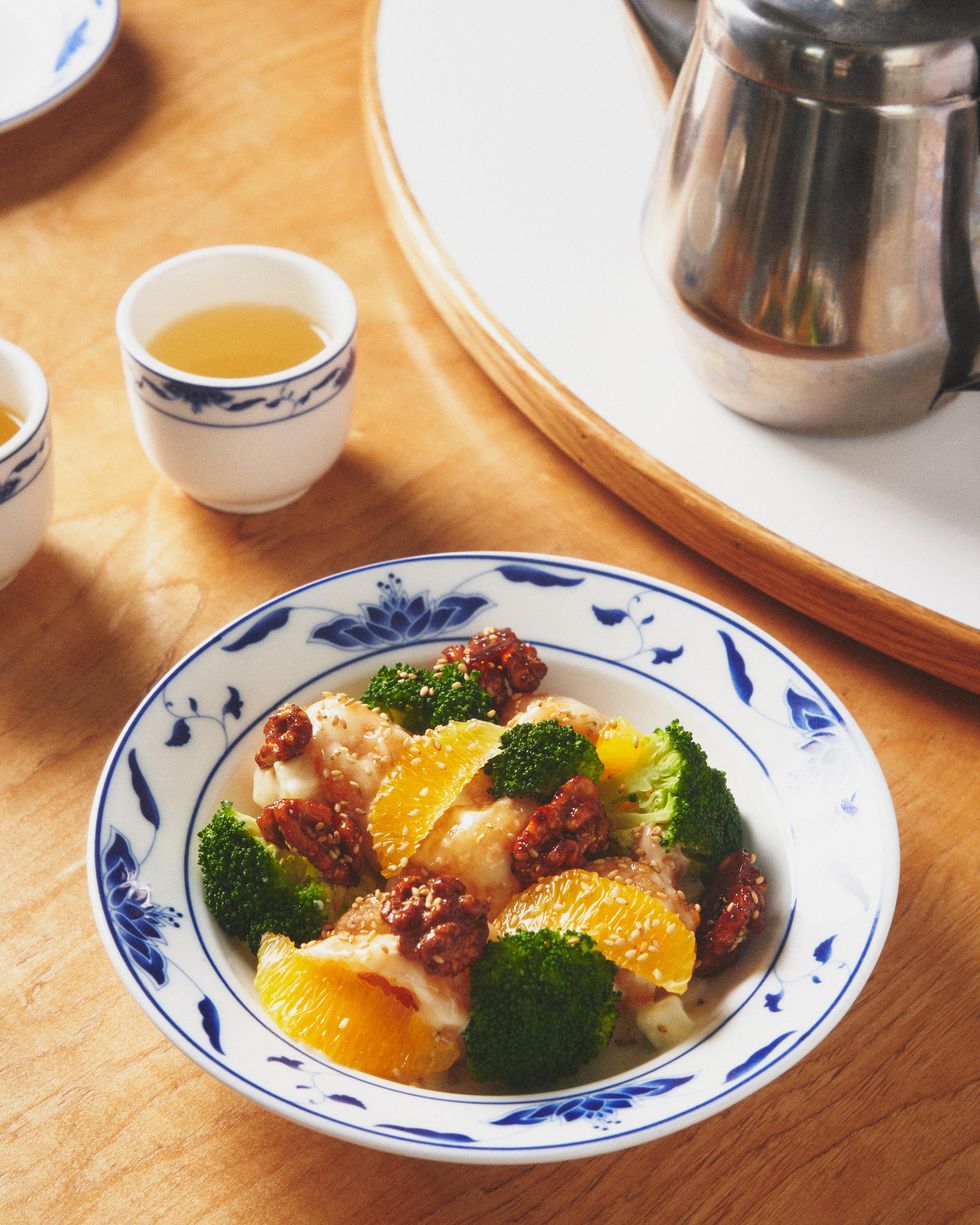
The Bonnie's Hup To Ha.
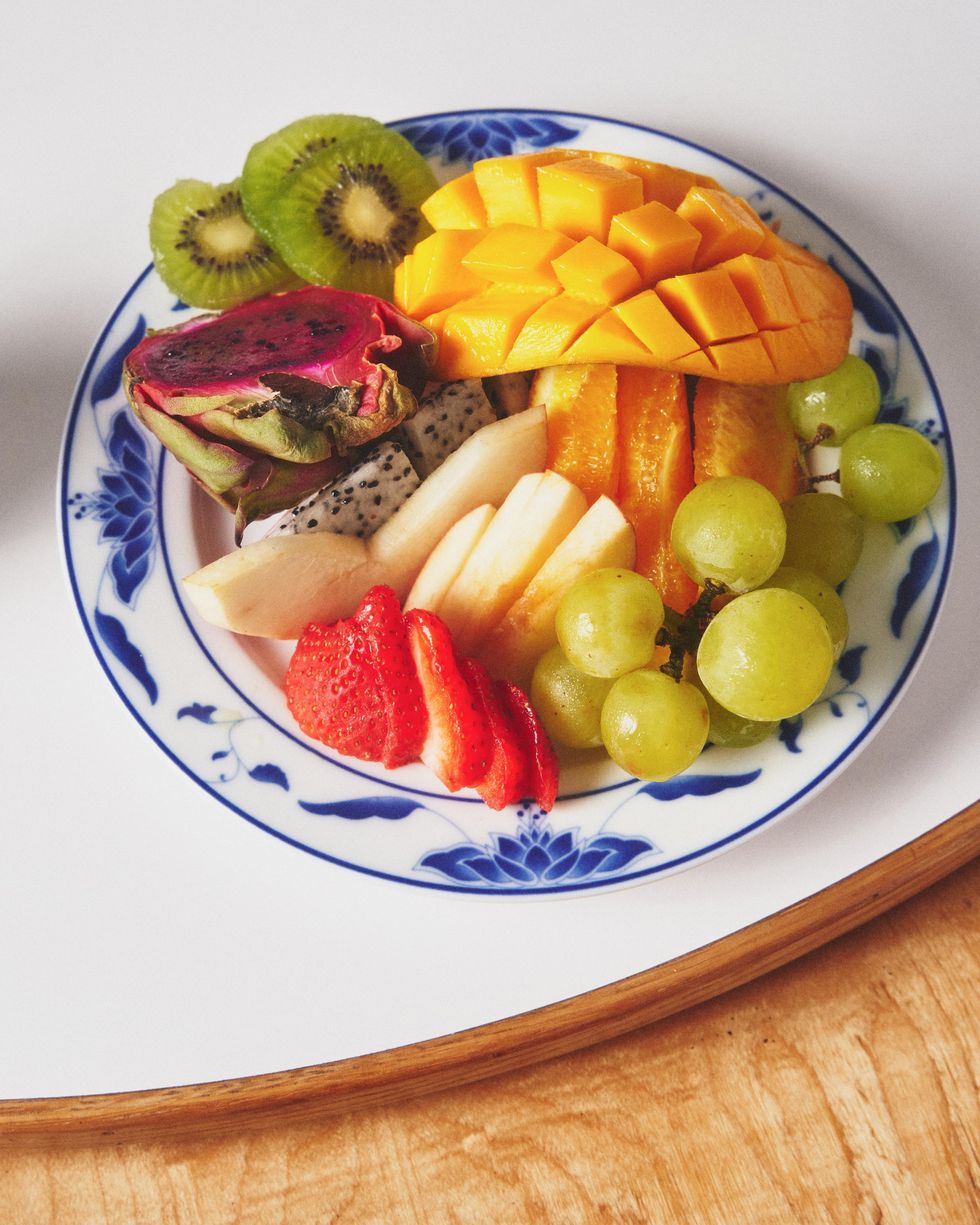
The Bonnie's fruit plate.
Despite his detailed curation of the menu, Eng jokes that he now rarely interacts with food. “The only time I touch food is when I eat food,” he says. “But to this point, you have to be familiar and know enough about the kitchen in this world to do well.” The chef-turned-restaurateur grew up with a penchant for Food Network ("30 Minute Meals was the shit"). He studied at Johnson & Wales University at the Providence campus. After formal cooking school, Eng sought to learn more about the creation of a vibe than hardcore culinary mastery. His resume features stints at Chinatown’s Nom Wah Tea Parlor, then Bonnie’s neighboring Win Son—a Taiwanese American restaurant right across the street. “That's one of the main reasons why I worked at Win Son,” he explains. “I didn't care to learn how to cook any of that food. I just had so much respect for what they were doing.”
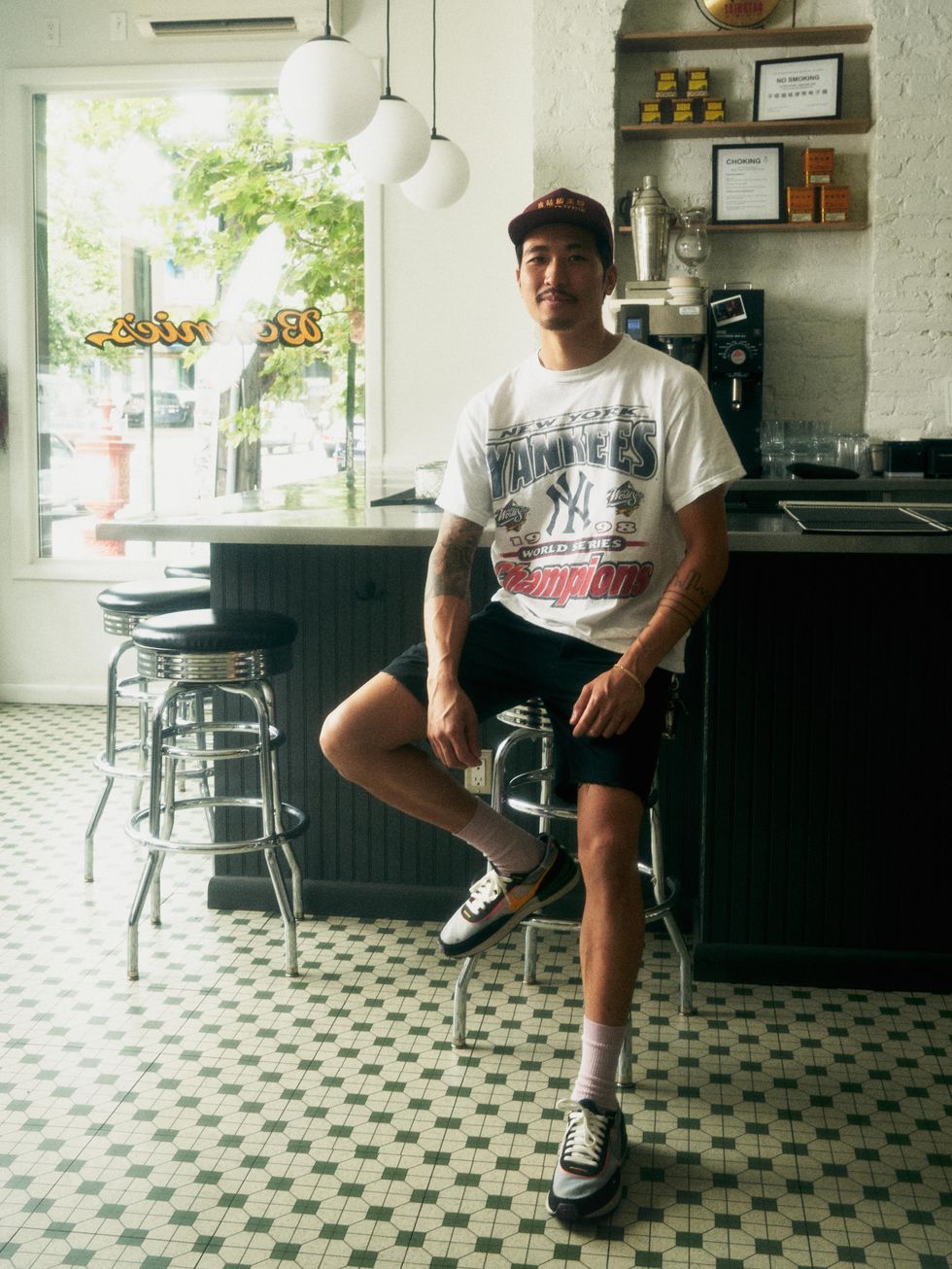
Eng wears a Yankees T-shirt passed down from his dad and stained kitchen pants he cut off to make shorts.

Eng collected decor from shops around Chinatown to display around the restaurant.
Launching his own restaurant was “the hardest thing I've ever done in my life,” he says. Before he had figured out the food, Eng focused on the feel of the physical space. The Bonnie’s property was originally an office; it required a full gut renovation. The New York city locale guaranteed limited square footage. Design was thereby governed by function. Eng’s priority list revolved around equipment and cooking stations in the kitchen. Then his girlfriend, a producer, helped with the aesthetics.
Eng tape-measured the entire space himself then drew it to scale on computer paper. “I can't even talk about that equation,” he laughs. During the 10-month demolition and reconstruction process, “every day I would lose inches and have to redraw the whole plan over and over again. I would lose equipment, lose space, lose doors, and just figure it out. And this is what we ended with.”

Eng wouldn't call himself a sneakerhead, but he loves to collect unique pairs.
Now, the space embodies the feel of a traditional Hong Kong diner, known as Cha Chaan Teng. Their characteristic tiles, which Eng ordered—with great pandemic-induced delay—from China, blanket the floors. Eng offset the greenery with the clean, sharp appearance of stainless steel chairs, bar stools, and countertops. Chinese bakeries are often outfitted in stainless steel for efficiency and cleanliness. Eng’s own childhood home had stainless steel railings, as he assures me do many Chinese homes in New York. He collected dishes and flatware to mimic what he used growing up, then sparsely peppered old silver teapots and floral vases around the restaurant (turn some around and you'll find they've cracked and been epoxied back together) purchased from stores in Chinatown to fill the empty space.
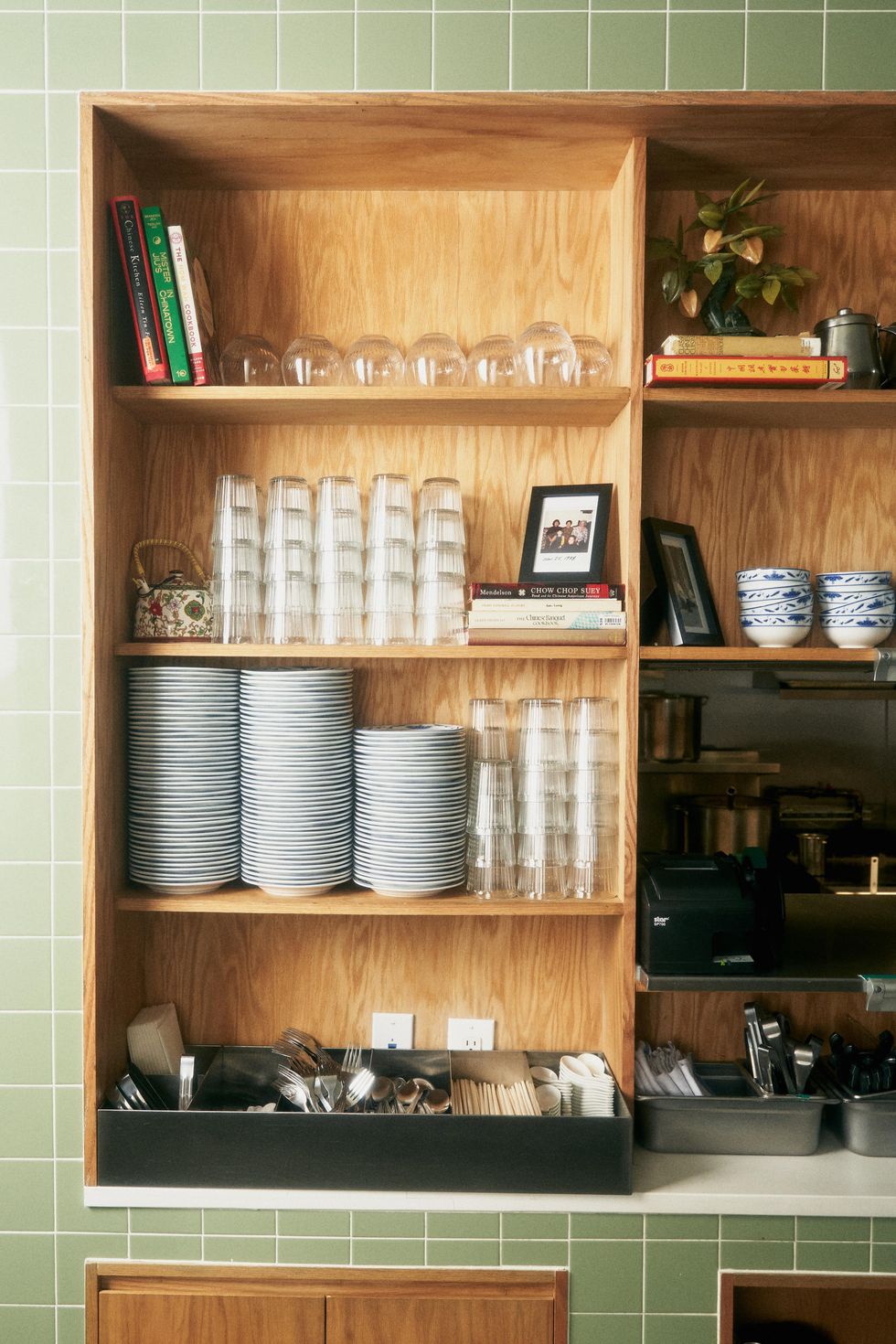
Eng collected dishware and flatware from stores in Chinatown.
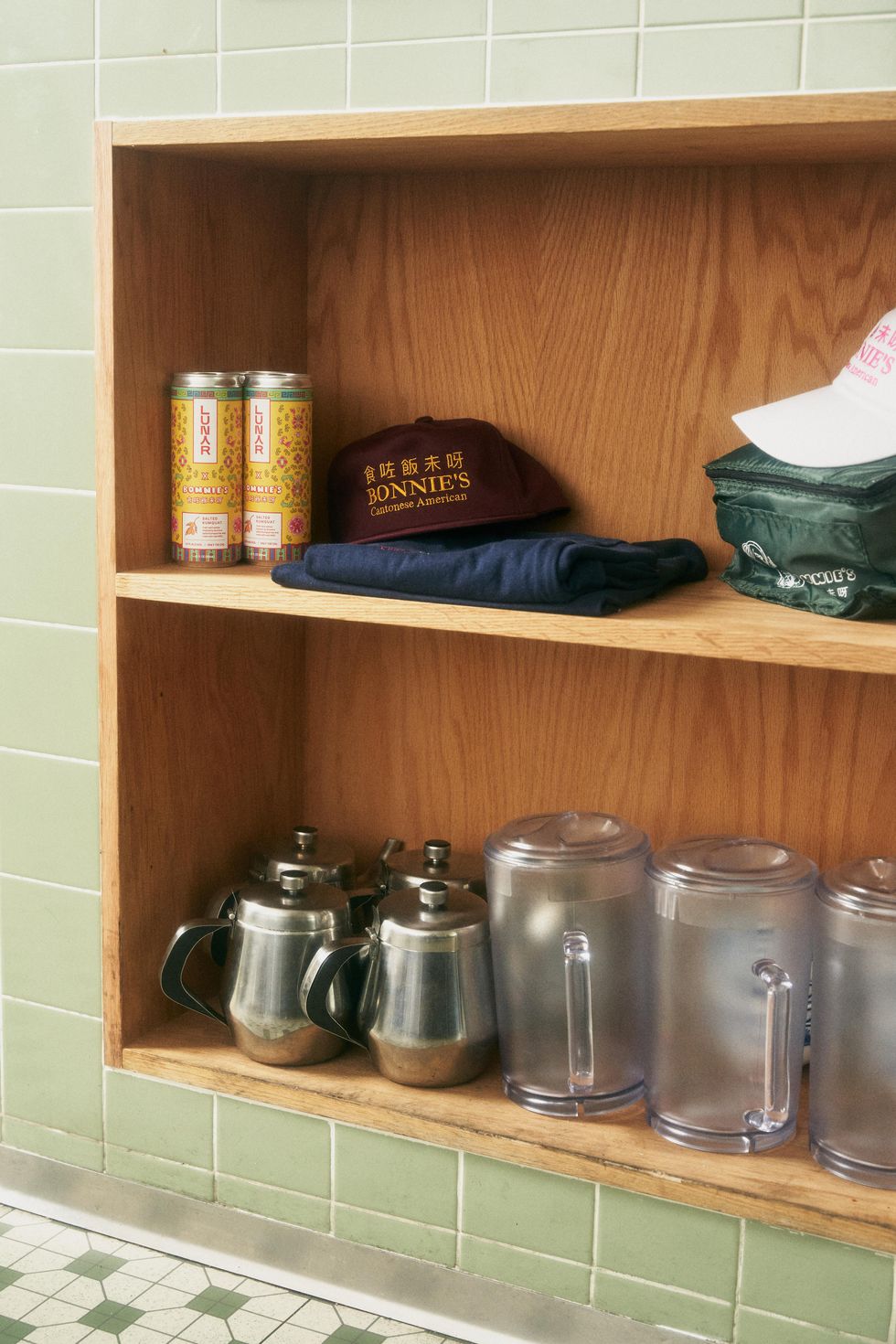
Bonnie's merchandise drops in limited quantities and sells out quickly.
“I just wanted to keep it clean and simple,” he reflects. Eng incorporated recess food cabinets for storage—another NYC necessity. A friend’s dad built them in Chinatown. The simple shelves exhibit everything from personal artifacts to favorite ingredients. Next to a slew of aesthetically-pleasing wine bottles sits Ribena—a blackcurrant drink of U.K. origin common in Hong Kong (a British colony until 1997). Eng hopes small touches like this will stir memories in guests with similar pasts to his. Anchoring everything from food to music to design to the clothing he wears back to the traditions and experiences that has colored his own life, he concludes, "Nostalgia, I always say, is my favorite ingredient.”




